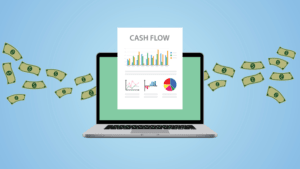
If both margins increase, it could be because of a recent trend you can invest in. For example, suppose your coffee shop introduces lattes to its menu. And half of your flat white drinkers start having lattes the next week. Your GPM will increase because lattes have lower COGS than flat whites—flat whites use more milk.
- Made by a business consist of the money that is left over once all of the expenses incurred in running the business have been paid.
- Gross profit margin is an important indicator of a company’s ability to generate profit from its core operations.
- It’s an easy formula that should help you measure the value your goods and services bring to your business.
- The NYU Stern School of Business compiled a list of average profit margins per industry that you can refer to.
- Your GPM will increase because lattes have lower COGS than flat whites—flat whites use more milk.
Lastly, it’s plug and play — simply take your sales revenue and subtract your cost of goods sold. Calculating gross profit is as simple as finding your revenue and the cost of goods sold. These usually come from your financial statements but can also be found by diving into your earnings, administrative expenses, and business credit card transactions. It’s important to note that gross profit is different than net income.
‘Superior to Any Bakeries’: This Costco Dessert Item Is Flying Off Shelves — By the Millions
It is the total amount of income your company generates from the sale of your products or services. It shows you clearly how much money you’re bringing in from your total sales. It does not include the costs of running your business, such as taxes, interest, and depreciation.

What are the leading teams doing that is different from everyone else, and what can we learn from them and put in place to improve our results? Stuart Doty and his wife, who both work in healthcare, found an easy way to earn some extra cash. Check out Entrepreneur’s other guides and articles for more helpful information to grow your business and professional knowledge. Amanda Bellucco-Chatham is an editor, writer, and fact-checker with years of experience researching personal finance topics. Specialties include general financial planning, career development, lending, retirement, tax preparation, and credit.
How Do I Calculate Gross Profit? Step-by-Step Example
All three calculations will tell you something new about your business, and you’ll be an expert at reading your profit and loss statement in no time. Chances are you paid in full before your supplier shipped them to you, but you need to replenish your stock—otherwise, you won’t gross profit examples have anything to sell and your beach stand will go out of business. When the inventory item is sold, the inventoriable costs are reclassified to the cost of goods sold. A retailer may have thousands or even millions of dollars in inventoriable costs that are not yet expensed.

Gross profit is the revenue minus the direct cost of producing the product or service. Gross profit is a metric shown on the income statement of companies and may also be referred to as gross margin or gross income. An increase or decrease in your gross profit is an indicator of your business’s performance.
What Does Gross Profit Measure?
Imagine the company is an accounting firm that audits other businesses. A single audit sells for $500 and costs $100 to produce, yielding a gross profit of $400. This gross profit margin assesses the profitability of your business’s manufacturing activities. The net profit margin provides a picture of your business’s overall profitability. Together, they give you an idea of your business’s financial health, empowering you to track trends and make quick business decisions. Consider the following quarterly income statement where a company has $100,000 in revenues and $75,000 in cost of goods sold.

This gives you 0.02, which you’ll then multiply by 100 to equal 2.7 percent. This means that your bakery had a net profit margin of 2.7 percent for the year. Gross profit is a way to determine how efficient your business is. It shows how effectively you use your resources—direct labor, raw materials, and other supplies—to produce end products. It helps you decide where you can save money and where you should invest it. Gross profit (also known as gross income) is the amount of money you make from selling your products and services after you deduct the costs of producing them.
What Is AccountsBalance?
You might have noticed that your cost of goods sold (COGS) is used for both calculations. Gross profit is an important measurement of the overall profitability of your business, as well as a way of keeping an eye on your costs to generate revenue. Gross profit, put simply, is the amount of profit you made in a given period after subtracting the cost of goods sold (COGS) from your total profit for the same period. Lastly, the cost of goods sold or COGs is the direct cost your business pays to make its goods or services.
- Cost of goods sold is the allocation of expenses required to produce the good or service for sale.
- A company’s gross profit will vary depending on whether it uses absorption costing or variable costing.
- Identify the total amount of revenue generated by the company during a specific period.
- These ‘costs of doing business’ affect your cash flow just as much as expenses that are directly related to products and services.
- Calculate gross margin to understand your business’s current finances better and make wise financial decisions in the future.
- Gross profit is typically used to calculate a company’s gross profit margin, which shows your gross profit as a percentage of total sales.



No comments yet.